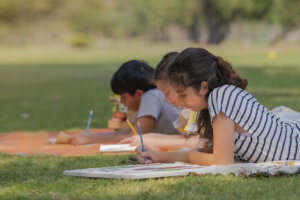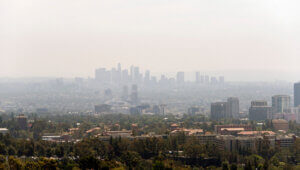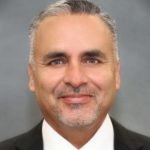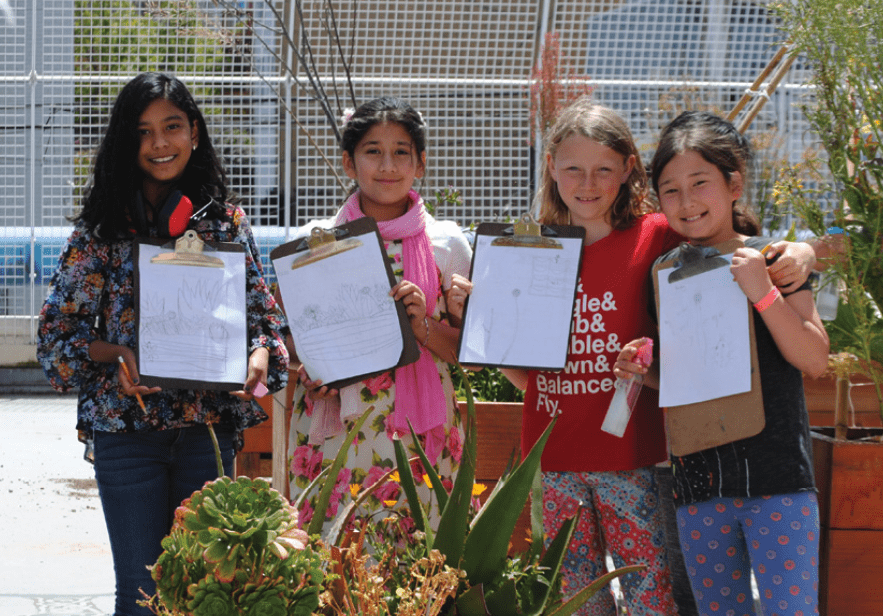As the new school year begins, educators are adapting to a new reality amid the COVID-19 pandemic. Schools are deciding if and how they should open their doors while multiple concerns hang in the balance. Indoor gatherings constitute a risk to community safety while virtual learning has revealed deep inequalities in students’ access to technology. Administrators are left asking: where do we go from here?
That’s why school districts across California are leading the movement for environmental literacy. This approach is emerging as a solution for educators to pair social distancing with the benefits of giving students access to nature and equitable educational opportunities. Some districts are already modeling what this “green return to school” can look like, as they collaborate on efforts to uplift environmental literacy through a new lens.
We asked two California superintendents about their experiences utilizing outdoor education and adapting to the COVID-19 pandemic, while keeping environmental literacy at the forefront:
- Dr. Faris Sabbah, superintendent of the Santa Cruz County Office of Education
- Dr. Cuauhtémoc Avila, superintendent of the Rialto Unified School District in San Bernardino County
In this Q&A, these two education leaders explain their two institutions’ unique approaches to integrating the environment into their core curriculum and values, and how they look different this year.
Why is environmental literacy important?
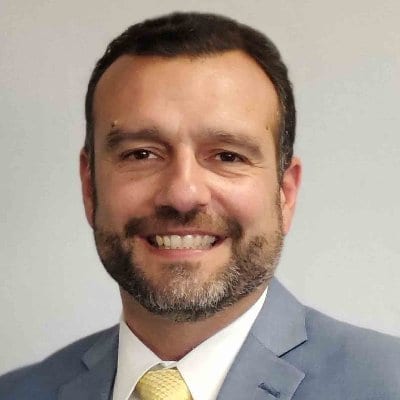
Dr. Sabbah:In education, we have a moral obligation to help our students prepare not only for their own future, but also to help them develop a sense of responsibility as part of the world. I think all students want a sustainable future. They connect the things we’re doing today with what we’ve been doing historically, thinking about how that plays into the future, and imagining the different possibilities that exist out there. It’s one of the higher level aspects of what education is really supposed to be about.
When I think about this through the equity lens, and how the current system impacts people of color and people who have been historically marginalized with racist policies, the next level beyond environmental education is environmental justice—providing students with the tools for them to recognize the dismantling aspect of that work and then rebuilding an anti-racist society. As citizens and students and educators, it’s important to embrace the responsibility to make changes and create a society that’s really worthy of our children.
At a more pragmatic level, there’s an education code that tells us we have to include the California Environmental Principles and Concepts in our curriculum. It’s something that we can implement in any classroom, and we can actually help students see the connections across that. It’s part of the Next Generation Science Standards and Common Core, which tie together everything we think good education is about. It’s something that gives students a moral connection, and it’s a place that students have a lot of concerns. It’s something that’s very real and that our students are passionate about. Environmental literacy provides skills that will help them be successful in life, from filtering through the misinformation that’s out there to challenging the conspiracy theories that try to deny the science, and developing environmental justice.
How can schools use their local resources—like ecosystems, parks, and campuses—to integrate nature-based learning for students?
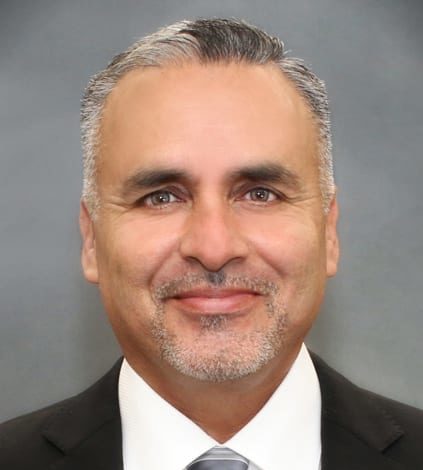
Dr. Avila: Teachers should promote project-based learning. Teachers can take kids to the various local environments to study, to explore, to touch, to feel, and to solve, or hypothesize about solving problems. It is a matter of agency, where we live by that Nike motto: “Just do it.”
We encourage teachers, parents, families to utilize not only the home, but also the regional resources that are available. It is critical to get kids out of those classrooms or off those video games, and take them out into the world to connect the meaning of learning with the natural environment, because that’s the best laboratory for us to learn in.
So “just doing it” starts with me and the other central office removing existing barriers so that teachers can meet such expectations. If we expect teachers to act towards our purpose: to ensure every child experiences personal and career fulfillment, then we must get away from the traditional instruction that centers on lecture, and knock down the walls to explore and use our environment as that natural laboratory.
How does your county plan to integrate environmental learning when school starts back up again? And how will that look different from how it’s been taught in the past?
Dr. Sabbah: Santa Cruz County has one of the highest per capita of NGOs or nonprofit agencies in the state. So we’ve been working with a lot of partners committed to environmental justice and environmental education. (Learn more about environmental education providers and how they’ve adjusted the COVID-19 pandemic.) When schools were in session normally, these organizations would help us connect classroom curriculum to the real world, but now that’s going to be presented in a distance learning format. These organizations are having to adapt, and some of them are having trouble surviving. That’s going to be a big challenge because once students get back to normal, we’re going to have to rebuild some of those additional services.
Those partnerships are key because they ground a lot of the work the students are doing and provide enhanced levels of expertise.
The second piece is the student leadership aspect. Students want to speak up about this and help make change. We have a role to facilitate that work and provide students with the support to gather data, put together an action plan, figure out how to fundraise, build relationships, and help them understand how to navigate the political landscape. We have the ability to facilitate and increase students’ capacity to become change agents. Then those more experienced folks can mentor the younger students. That way, we step back as adults and let it become a youth-driven organization.
How can you ensure that students have equitable access to outdoor and environmental learning opportunities during this time?
Dr. Avila: Rialto made a huge commitment four years ago when we included the community, students, teachers, support staff, and board members as part of a strategic planning team. We wanted to deeply understand our community and the needs of our students through open approach to education; one that provides agency instead of being directed, closed or isolated.
We committed to provide the resources and strategies to help kids experience personal and career
fulfillment. One way to measure this is to ensure students are physically, mentally, and educationally healthy. If they are, then we can have holistic wellness (body, soul, and spirit). If kids are happy that means they are thriving. And they are thriving because they have holistic health, which includes education, and in this case, environmental literacy. And so my way to ensure equity is to stay true to ourselves and to the strategic plan we committed to four years ago.
How can schools integrate the environment into core subject areas, for both in-person and distance learning?
Dr. Sabbah: Environmental education is a curricular experience. As teachers go through their process of reviewing their standards and curriculum, developing their units, and implementing lesson plans, that process needs to be a lot more collaborative. That’s a way to continue to provide meaningful environmental education.
These lessons can’t be standalone items, because it’s not going to have the impact that it’s really about. It has to be a common thread that ties through. I used to be a history teacher, so the common thread I’d always tie to was the idea of our responsibility within a democracy. In the same way, a common thread of environmental awareness, and how the implications of that affect everything we do, should tie into all subject areas. I’ve seen this done most effectively in collaborations between departments, when they integrate units that build on each other. We need more of that, and there are so many great resources to help make it happen.
This does require a commitment from the school, as well as the full district, to incorporate it. I think one of the challenges we’ve faced as an educational system is making it a community priority, instead of having the luck of the right teacher and the right student to make an impact because of that internal passion for environmental education or environmental justice—“I had that experience with that teacher, so that got me really involved in environmental learning, but the rest of my peers did not.”
It’s important for a school to collaborate and make it one of its priorities in the educational experience for students. We need to infuse it into the core experience for kids, just like when we think about creating aware and active citizens, part of that is how we define their responsibility to advocate for protecting the environment.
How does Rialto USD integrate holistic wellness into its approach to environmental learning?
Dr. Avila: It’s been quite the experience these last few years, as we really opened the doors to environmental literacy. A number of our schools have gone to great lengths to become green schools. The enthusiasm has really taken off in this community. We continue to authentically engage families along the way, and have had tremendous success with the opening of wellness centers, healing gardens, and more.
Families and staff members are appreciative of the approach that we, as a district, are taking when it comes to personal and organizational wellness. We learn so much when we listen to kids and adults. Our Positive Behavioral Interventions and Supports approach and restorative justice circles has helped us bring personal holistic wellness to students by not suspending them, which can be harmful to their well-being and often contributes to the school-to-prison pipeline.
Restorative circles are traditionally intended for students, but we know that we can’t reach students if we the adults are not healthy. We had these circles for the adults willing to open up during the development of each school’s strategic plan, and the tears and the bluntness of some of their statements have been telling. It began the healing process, and because of it, schools were able to develop healthy plans since everyone was on the same page. Many were able to let go of whatever resentments had kept them from being part of a unified staff.
The restorative circles for students have been ongoing. It’s usually in the wellness centers whenever there’s an issue among students. Usually it’s the students who are charged with providing solutions to the very problems that they become a part of. When they have that agency, it’s totally different from just being told, “Don’t do this, and don’t do that.” It’s really an approach to harmonize the body, soul and spirit at the individual level.
This approach has been a movement within environmental literacy, because it includes personal wellness. There’s been an increase in physical fitness and in partnerships with the city such as to provide safe routes to school. This is all within the context of a healthy community. So it’s one of the pieces that contributes to a better environment for everyone to thrive.
What role can environmental learning play in making education more agile and adaptable in a rapidly changing world?
Dr. Sabbah: When I think about the understanding of systems and how students have to approach problem solving in this climate, you can’t just think of quick fixes. A lot of times, our politicians talk about quick fixes. But we must help students develop an understanding of the complexity of the different systems in place. This isn’t just important for environmental education, but it contributes to the problem solving of any challenge we face in society, whether it’s economics or environment or racism. Understanding the historical context and pressures that exist is the first step to challenging the political inertia working against change. This is an essential part of students’ ability to become change agents for environmental justice or anything else. The problem is complex, so the solutions are going to be complex.
But with that interconnectedness comes the understanding that we’re not alone. It’s not you standing alone against these problems; you have to create partnerships, join with all these other people who are advocating, and look at all these people in different sectors wanting to provide positive solutions. We have to work together. It’s great to instill a passion for environmental justice for our students, but it’s also our responsibility to help them understand how realistic it is to become a person who can help address and solve those challenges. That’s how we make it “real world” for them.



